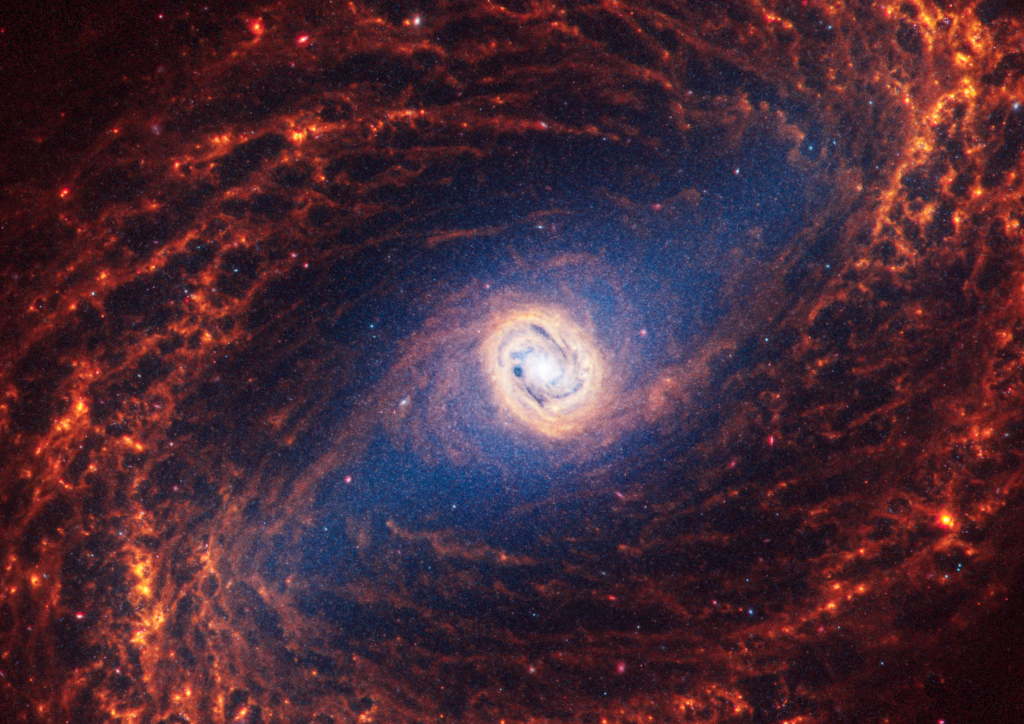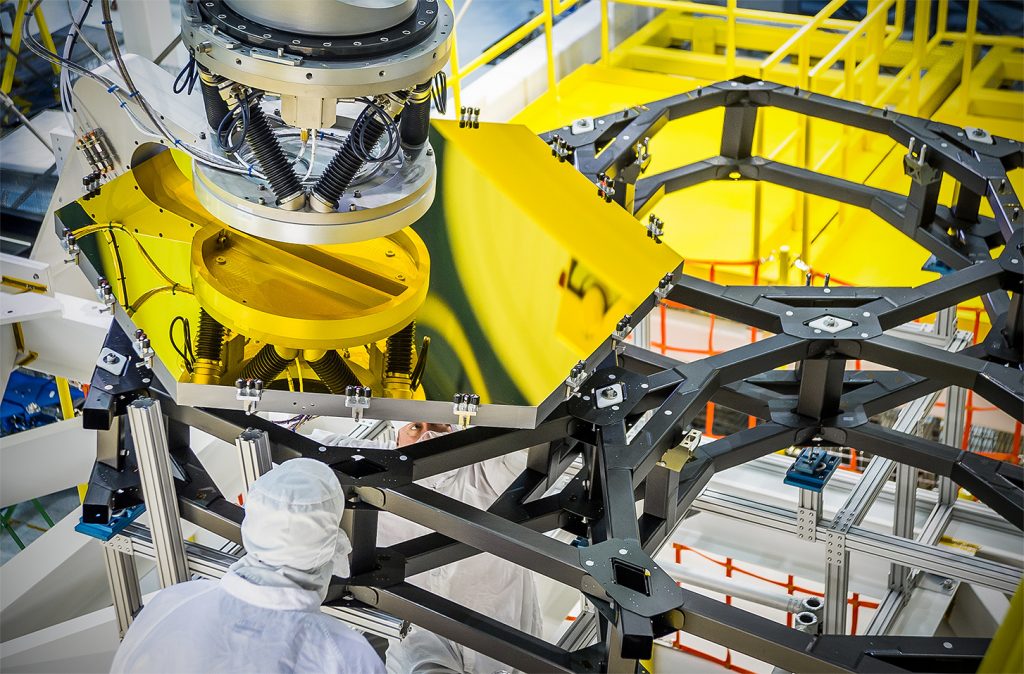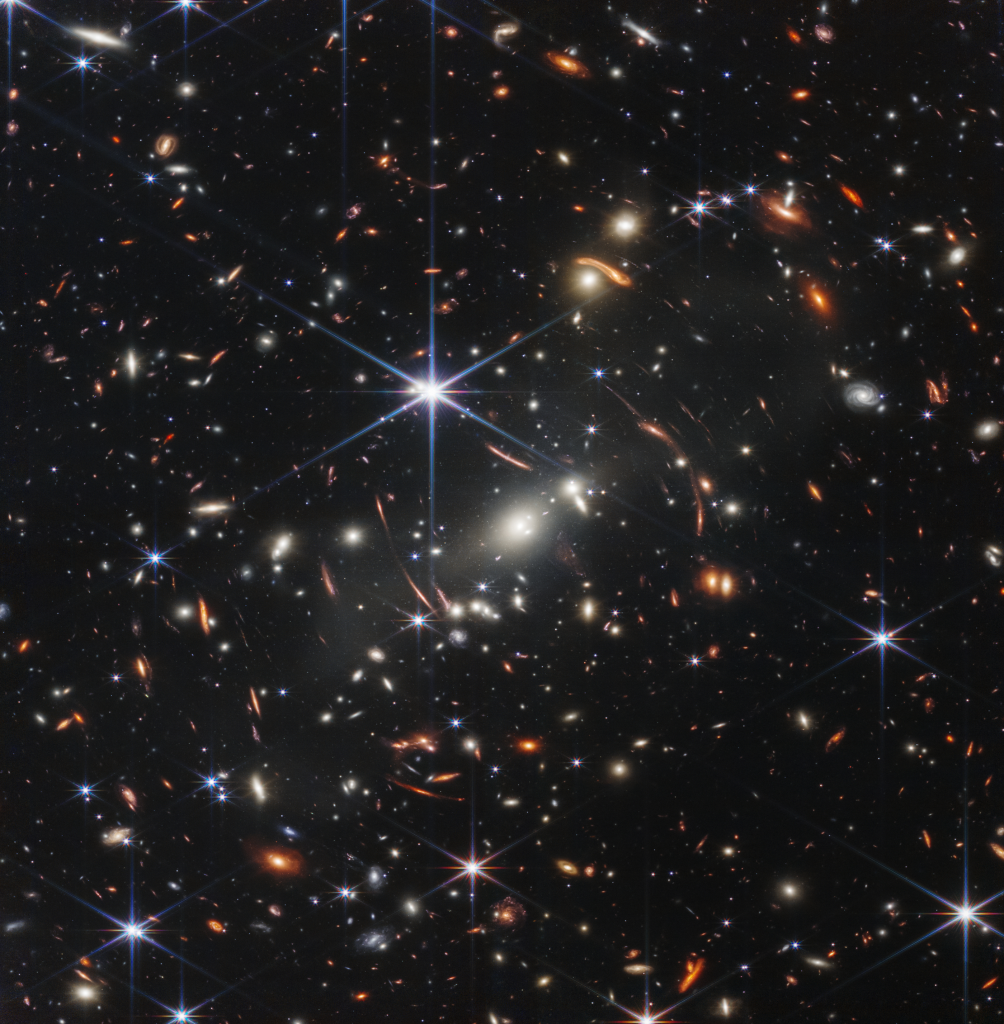On July 12, 2022, NASA released the first full color images from the James Webb Space Telescope. These highly anticipated images debuted just over 6 months after Webb was first launched on December 25, 2021; and they showcase never before seen views of our universe in astounding clarity. These infrared images give us an unprecedented window into the history of the cosmos, investigating the origins of the universe and our place within it.
History of the Webb Telescope
The James Webb Space Telescope is named after previous NASA administrator James E. Webb, who oversaw the first manned missions to space. Designed and built to complement and expand upon the discoveries of the famous Hubble Space Telescope, the James Webb Space Telescope is unique with its wider wavelength range and significantly increased sensitivity. It is said that the telescope is so sensitive that theoretically, it could pick up on the heat of a bumblebee on the moon from its current position.

Webb is also designed to be ultra sensitive to infrared light, which allows it to observe light that was emitted from the formation of the first galaxies and stars that have since been “redshifted” as the universe has continually expanded. This capability was designed with the intent to give astronomers a clearer picture of how galaxies are created over time, as well as insight into the earliest stages of our universe. It took a large team with thousands of scientists, technicians, and engineers from all around the globe over 3 decades and a collective total of 40 million hours to build.
Where is Webb? What is its Mission?
The James Webb Space Telescope is currently about 1.5 million miles away from earth, orbiting the sun alongside the second Lagrange point. At Lagrange points, the centripetal force necessary for a tiny item to travel with two massive masses precisely equals their gravitational attraction. Therefore, objects transported to Lagrange locations in space have a tendency to remain there. By using these locations in space, spacecraft can spend less fuel to maintain their position.
While it is called a telescope, Webb is truly a complex observatory. In a way, Webb is the closest we can come to time travel- it provides us with pictures using infrared light that show us what the near and distant reaches of the universe looked like billions of years ago.
In addition to taking photographs, Webb is equipped with the technology to observe and collect information about the physical and chemical properties found on objects in space. This data is known as spectra. The spectrographs utilized by Webb are also capable of detecting oxygen in the atmospheres of exoplanets nearby, which can shine light on the possibility of inhabiting other worlds.

What is Webb Made Of?
Since Webb was made to orbit the sun, a lot of time was spent in developing its design and durability. One of the most important aspects of design is the sunshield, which was created to protect the telescope from the interference of the strong infrared light that emanates from the Sun (as well as the Earth and Moon).
The sunshield has 5 layers, with a minimum inner temperature of -390 degrees Fahrenheit and a maximum outer temperature of 260 degrees Fahrenheit. It is created from gossamer polymer membranes that are coated in aluminum, and is about the size of a tennis court. The sunshield provides protection that is roughly equivalent to putting on a sunscreen of SPF 1,000,000,000.
Webb also has a large primary mirror that is composed of 18 individual mirror segments, with a total diameter of over 21 feet.

What Can We Learn From Webb’s Pictures?
One of the most widely shared photographs so far, this picture shows a galaxy cluster known as SMACS 0723, along with a large number of additional galaxies in front of and behind it. This photo displays the cluster as it would have been 4.6 billion years ago. The red objects indicate a heavy layer of dust, while green indicates compounds such as hydrocarbons. Blue colored objects indicate the presence of stars, but with little to no dust.
This deep field glimpse into space is actually a composite image, created from pictures captured over 12.5 hours at varying infrared wavelengths. This is a much shorter timeframe than the Hubble Space Telescope is capable of, as Hubble takes weeks to compile deep field images.
By comparing the visual images to the spectra data gathered by Webb, astronomers can learn new and informative details of galaxies such as their age, mass, composition, and history.
Additional Information







